| Title | The Citadel |
| Released | Aug 5, 2020 |
| Developer(s): | doekuramori |
| Publisher(s): | Top Hat Studios, Inc. |
| Platform(s): | |
| Genre | FPS, Indie, Action |
| Rating | M |
| Price | $14.99 |
Completed on PC on Normal
HowLongToBeat Time: 5½ Hours | My Clear Time: 6½ Hours
Background
The Citadel is a retro-styled first-person shooter developed entirely by solo creator doekuramori using Unreal Engine for PC. It launched on August 5, 2020, via Steam and GOG, with Top Hat Studios later stepping in as co-publisher to assist with ongoing bug fixes and performance updates.
Drawing from a wide range of influences, The Citadel merges biomechanical horror and cyberpunk aesthetics inspired by H.R. Giger and Ghost in the Shell. On the gameplay front, it channels the speed and brutality of PC shooter classics like Rise Of The Triad, Marathon, and Wolfenstein, delivering exaggerated violence, physics-driven gibbing, and relentless twitch-based combat.
While its anime-inspired visuals and graphic gore raised a few eyebrows, the developer clarified that the style reflects his personal art direction and cultural background—nothing more. The Citadel isn’t aiming to titillate; it’s a stylized tribute to retro shooters through the lens of a solo Japanese artist with a distinct, uncompromising vision.
The development team for The Citadel includes:
- Doekuramori
- Known for The Citadel, Beyond Citadel
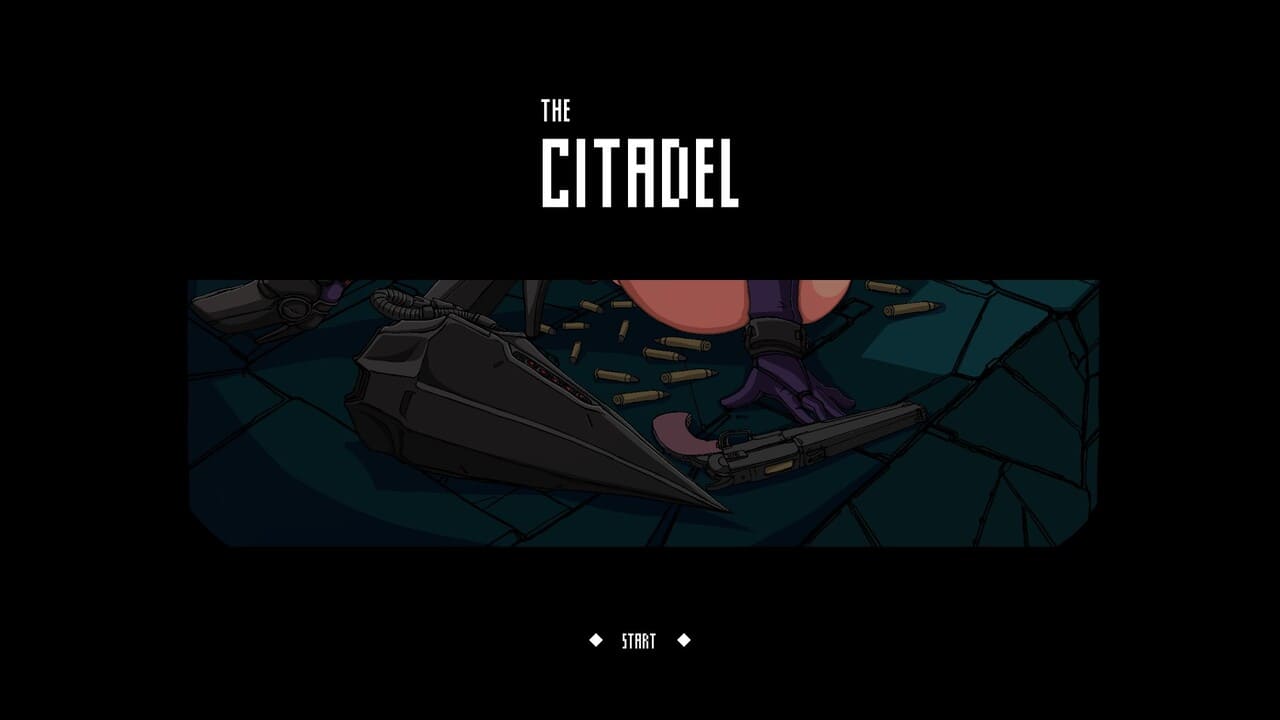
The minimalist title screen hints at violence just beneath the surface.
Experience
Heading into The Citadel, I had a pretty clear idea of what it might be pulling from. I’m a longtime fan of the Alien franchise, so Giger’s biomechanical influence was immediately recognizable. The cyberpunk overtones were just as familiar—Ghost in the Shell is my favorite anime IP, and its imprint is all over the game’s tech-noir setting.
Visually, the references are unmistakable. Mechanically, I had a separate set of expectations.
I’ve spent a lot of time with the classics: DOOM, Wolfenstein 3D, Quake, Unreal, Duke Nukem 3D, Rise of the Triad, Painkiller, Serious Sam—the full gamut. So I walked into The Citadel with both an appreciation for its roots and a sense of what makes a retro-inspired FPS feel right.

A minimal reward for surviving The Citadel’s merciless gauntlet.
Impressions
Introduction
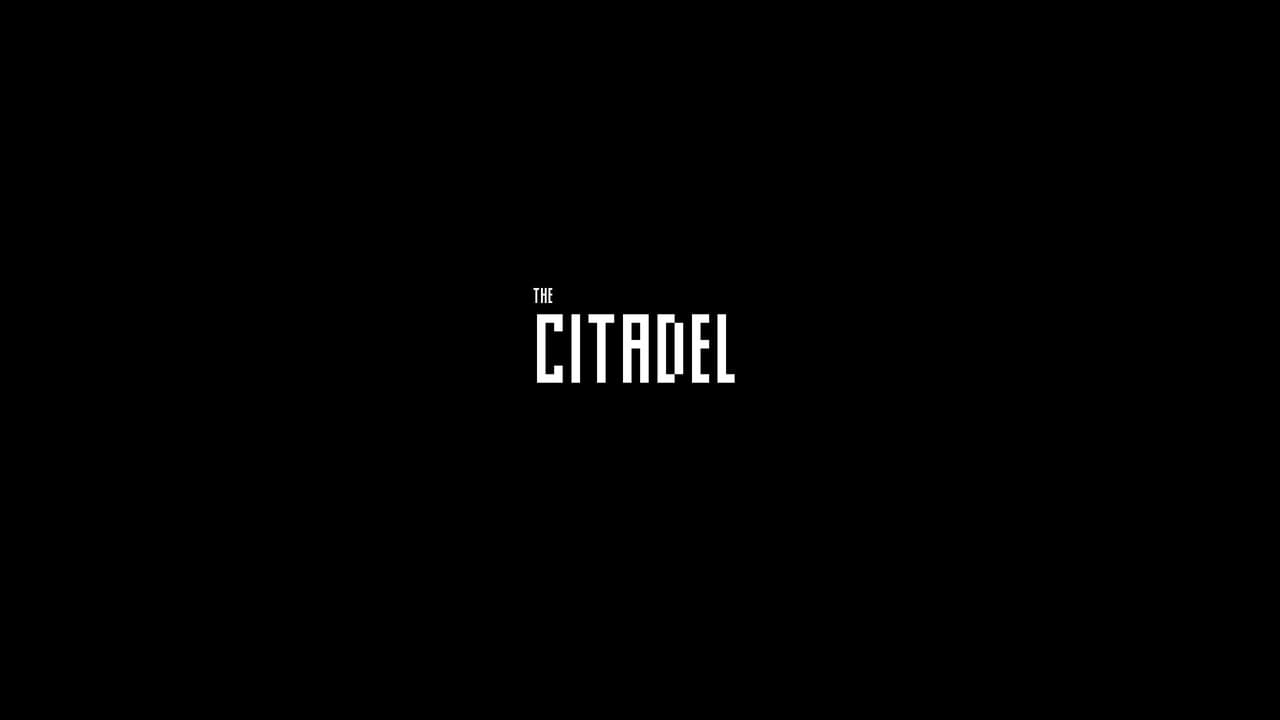
The Citadel title card keeps it stark and serious, just like the game.
From the moment you step into The Citadel, you’re plunged into a world that feels like a fever dream of ’90s shooters and oppressive anime. The game doesn’t hold your hand; instead, it throws you into the deep end with a cryptic UI and a protagonist who seems to have walked straight out of a biomechanical nightmare. It’s a love letter to classics like Rise of The Triad and Marathon, but with a twisted flair that’s uniquely its own.
Gameplay and Mechanics
Combat is fast, frenetic, and absolutely punishing. Enemies swarm in grotesque waves, and the game demands pinpoint reflexes and brutal efficiency. The arsenal is varied—everything from familiar lead-spitters to alien, experimental oddities, each with their own quirks and mastery curves. But there’s a caveat: the controls sometimes feel floaty, which can make both aiming and movement trickier than they should be. That imprecision undercuts the speed-focused design just enough to feel frustrating in tense moments.
Weapons & Ammo
Sticking to its classic shooter roots, each weapon in The Citadel uses its own dedicated ammo type. But many of them also include alternate fire modes that draw from a shared pool such as grenades, and energy cells for example. That twist adds a welcome layer of strategy—forcing you to think ahead, manage limited resources, and make careful choices about when to go all-in. Running dry at the wrong moment can and will cost you.
Platforming & Traversal
There’s a surprising amount of platforming here—more than you’d expect from a shooter like this. While it never veers into full Metroidvania territory, The Citadel introduces movement mechanics gradually: gliding after a sprint, leaping across massive chasms, and chaining mid-air maneuvers to survive. Backtracking isn’t the focus; instead, it’s about adapting on the fly and learning the game’s unspoken rules through experimentation.
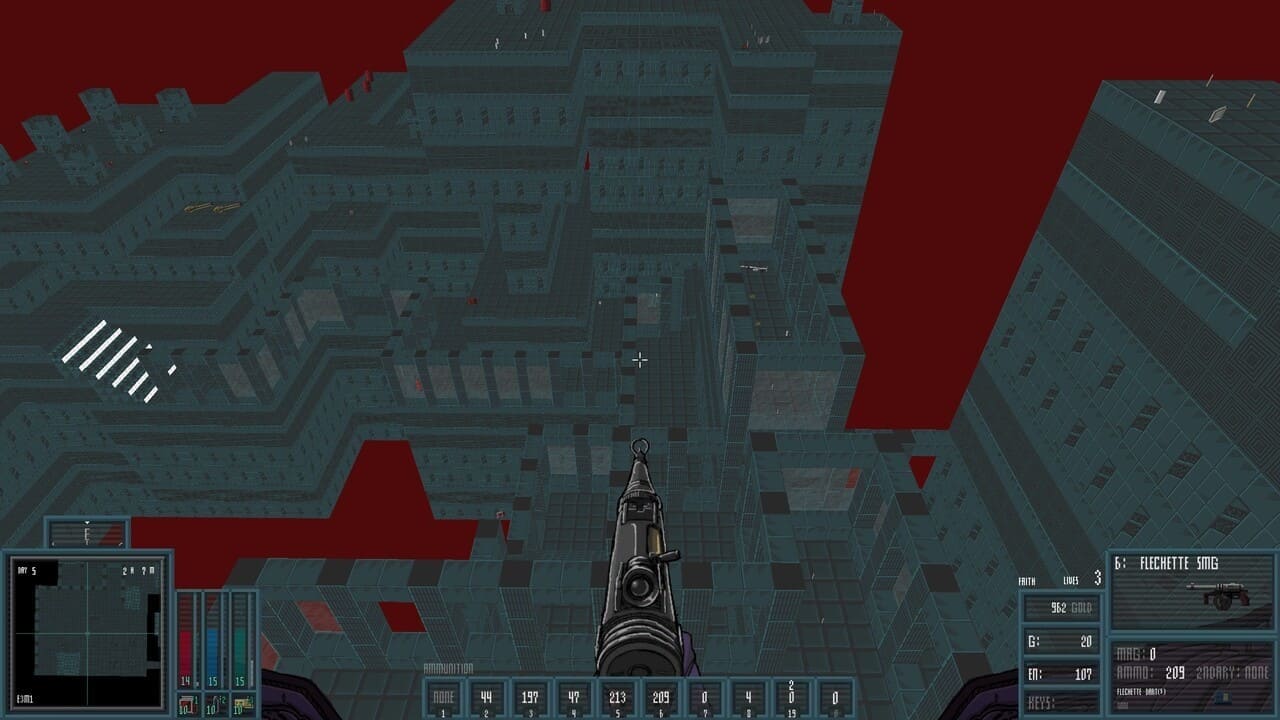
The Martyr overlooks the battlefield with Flechette in hand and chaos below.
Learning Curve
One of The Citadel’s biggest strengths—and also one of its potential stumbling blocks—is how much it asks of the player. Fast reflexes help, but they won’t carry you. You need to learn enemy behavior, manage stamina and health, conserve ammo, and leverage your environment. It can feel overwhelming early on, but there’s satisfaction in pushing through the punishment and coming out sharper on the other side. When things finally click, it’s a rush.
Art & Audio
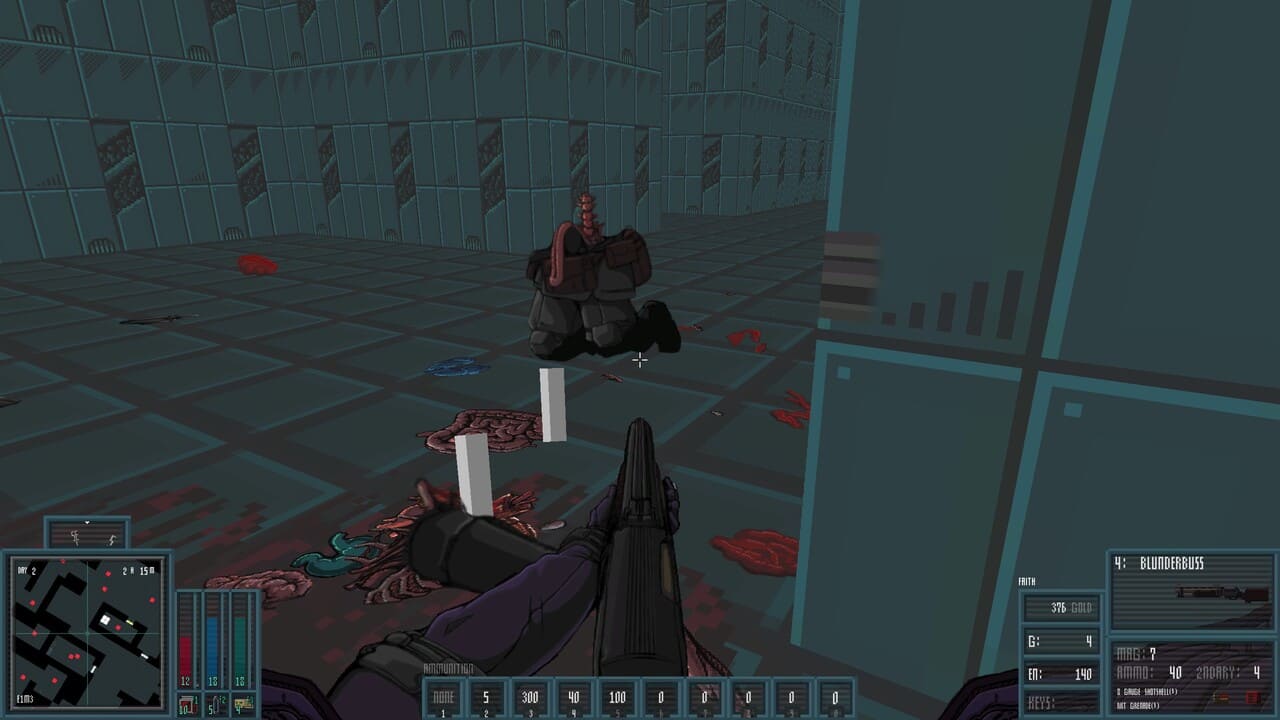
The Martyr leaves pieces behind after a close encounter.
The Citadel wears its influences loud and proud. It’s Ghost in the Shell by way of Giger’s darkest sketches, draped in gore straight out of Rise of the Triad. If you’re into that aesthetic, this game is a rare treat—visually raw, but striking.
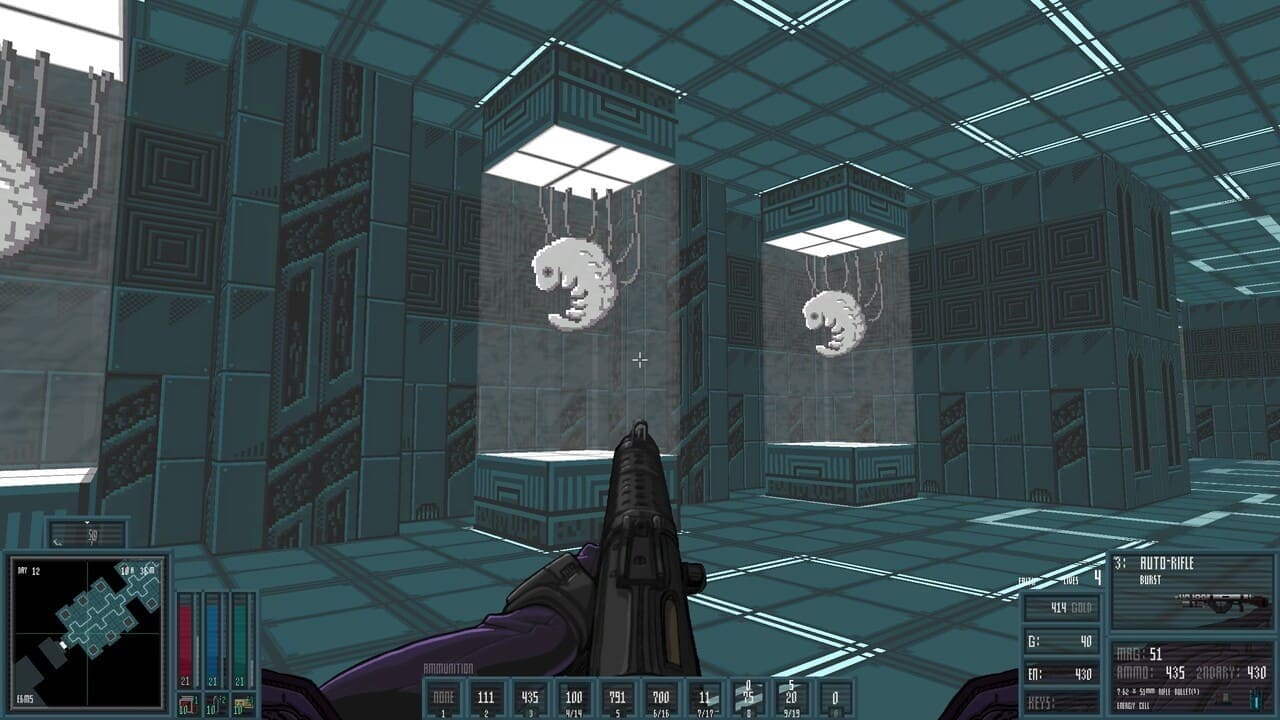
H.R. Giger vibes meet relentless combat in The Citadel.
The music stands out for a different reason: it’s entirely royalty-free, but you’d never know from how well it all fits. Ambient tracks lull you into false security between fights, while high-tension moments explode with pulsing, mechanical energy.
Some standout tracks:
- “E1M2 Smoke and Powder”: brooding momentum with a creeping sense of dread.
- “E3M1 Whirlwind”: hard-hitting synths tailor-made for firefights.
- “Intermission 1”: sparse piano that borders on meditative—an unexpected breather between the chaos.
Sound design hits just as hard, from the weighty thud of gunfire to the tink of shell casings hitting metal. Everything reinforces the brutality.
Unique Features and Mechanics
The Citadel stands out by blending classic retro-FPS elements with some bold experimental systems that demand patience and adaptation. At its core, it’s a fast-paced, movement-heavy shooter—but with a twist. Stamina and survival mechanics are layered into the gameplay, creating a more strategic, resource-driven experience.
Three Stage Health
The game’s three health meters—Blood, O?, and Food—are essential to survival, each serving a unique purpose in keeping you alive and mobile:
- Blood Meter: Your primary health pool. It depletes gradually, influenced by your food meter.
- O? Meter: Governs stamina and controls your ability to sprint and double-jump. It also triggers slow-motion effects when overloaded.
- Food Meter: Works with both blood and stamina, ensuring O? regeneration and optimizing blood pickups. You must consume food to maintain balance across these resources. This also acts as your celing for your O? and Blood Meter.
These meters are consumable and have limited capacity, which varies depending on difficulty settings. This adds an extra layer of strategy, forcing players to balance aggressive combat with thoughtful resource management. You’ll need to decide when to fight and when to conserve—every encounter carries weight.
Platforming & Movement Mechanics
Platforming isn’t just an afterthought in The Citadel—it’s central to both exploration and survival. The game rewards those who master its unique movement mechanics:
- Double Jumping: A critical mechanic for traversing large spaces. While it offers agility, overshooting can put you in dangerous territory.
- Leaning: A subtle but crucial feature that allows you to peek around corners, providing a tactical advantage when eliminating enemies before they spot you.
- Sprint / Kick: Sprinting lets you charge through enemies, while tapping the sprint button delivers a powerful kick to knock back foes in tight spaces.
Combat arenas are designed with verticality in mind, encouraging fast reflexes and aerial control. However, the floaty movement and momentum-based design may be challenging for players accustomed to tighter controls.
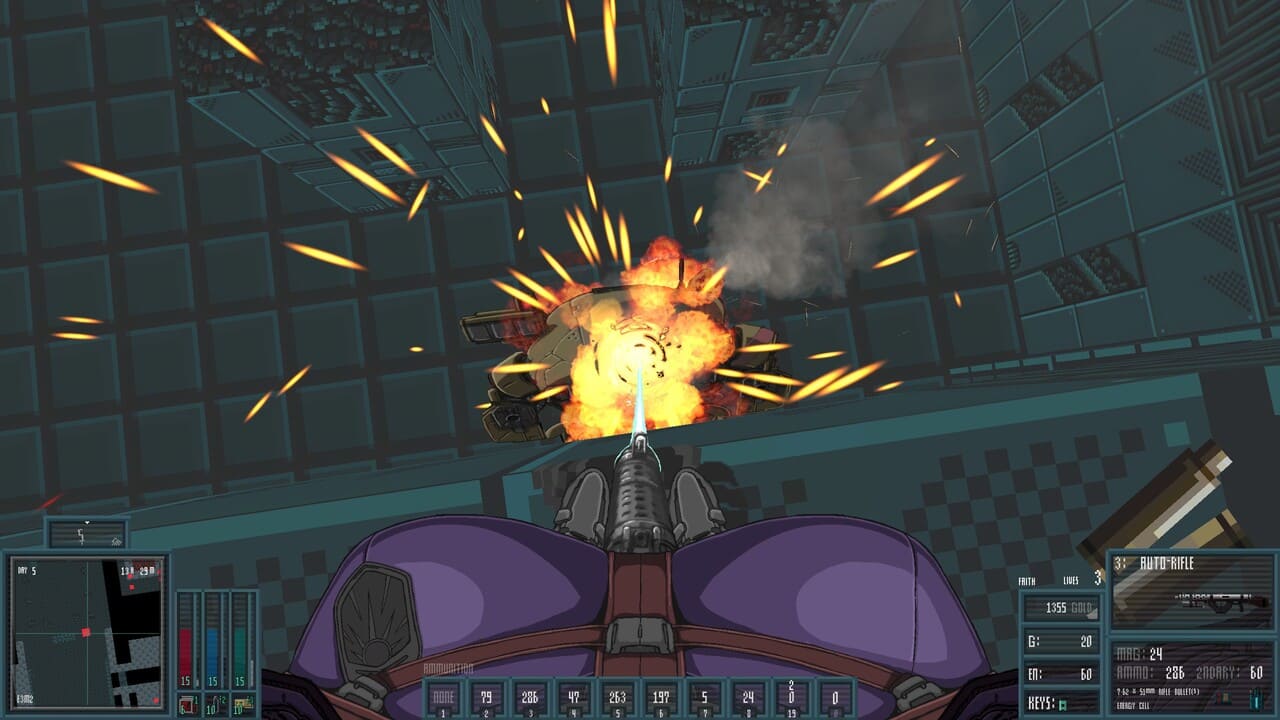
The Martyr’s alternate fire unleashes havoc from a unique angle.
Alternate Fire Modes & Energy Management
Weapons in The Citadel feature distinct Alternate Fire Modes, offering additional combat options. These modes share a common Energy Cell pool, which forces players to manage their resources carefully. Whether deploying grenades or using energy-based ammo, mastering these secondary functions adds a layer of strategy and versatility to every encounter.
Unique Reload Mechanics
Reloading in The Citadel is immersive and requires a bit of skill. Each weapon features realistic magazine and clip management:
- Shotguns: You manually load each shell. Tapping the reload button speeds up this process, making it easier to stay on the offensive.
- Rifles: Double-tapping the reload button discards any remaining rounds in your current magazine, forcing you to think about timing your shots and reloads wisely.
It’s a small detail that adds to the game’s immersive survival experience and makes the player feel more connected to their weapons.
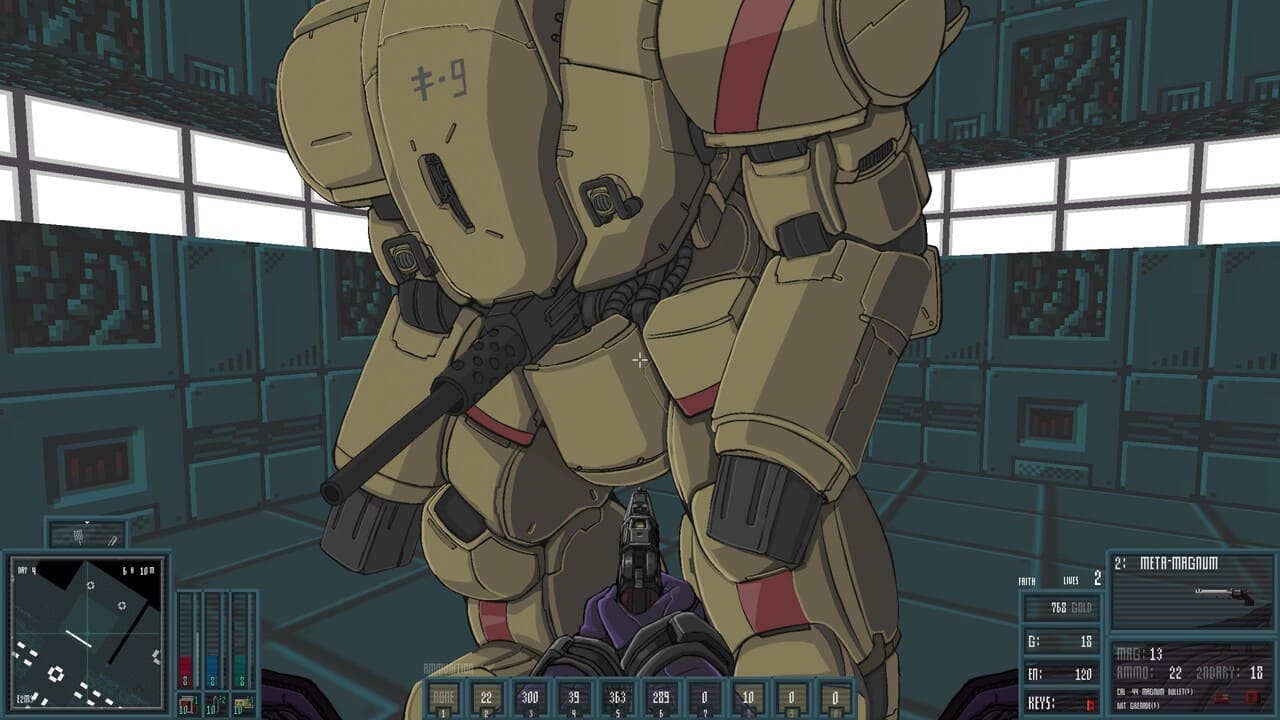
The Martyr gears up with heavy firepower.
Pilotable Mechs & Vehicle Sections
One of the memorable features of The Citadel is the inclusion of pilotable mechs. These mech sections offer a welcome change of pace and provide a powerful shift in gameplay. Piloting these heavy machines lets you unleash hell on enemies with massive cannons and machine guns. The sheer force of these mechs brings an exciting dynamic to the experience.
Strategic cover use and positioning become crucial, as the overwhelming firepower of the mechs can quickly turn the tide in intense battles. The mech segments highlight the game’s variety and add a refreshing burst of high-octane action to the mix.
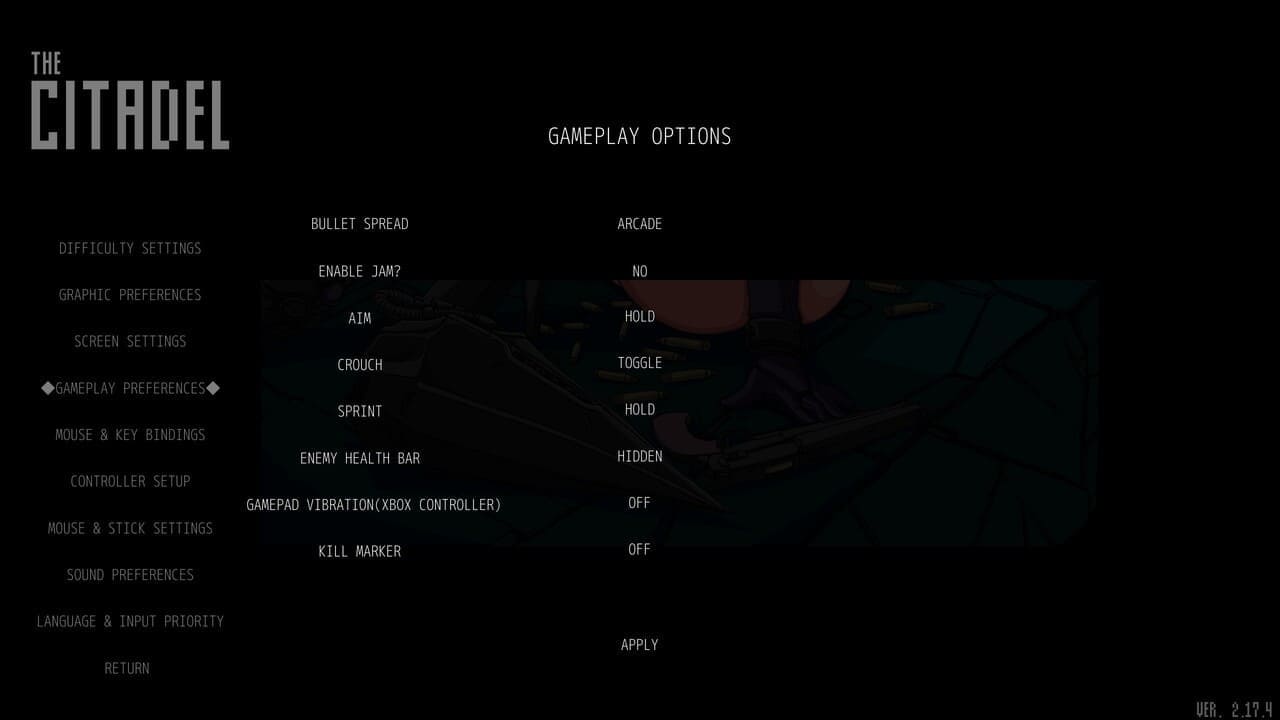
The Citadel lets you tweak chaos to your liking.
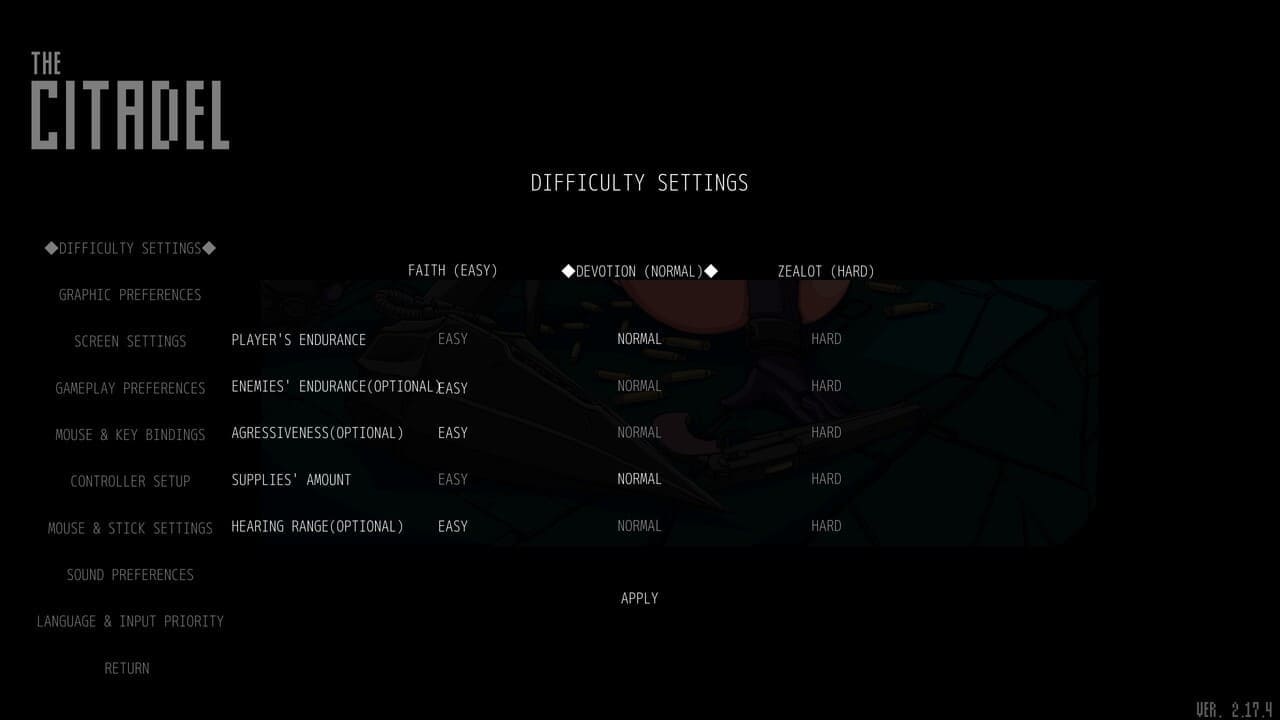
Tweak endurance, aggression, and survival to taste.
Gameplay Customization
Despite its old-school roots, The Citadel offers plenty of customization to suit different playstyles. You can tweak everything from difficulty to more granular settings, such as weapon jamming, bullet spread, and enemy health bars. Whether you prefer an arcade-style romp or a more purist approach, the game scales well to your preferences.
The ability to adjust these settings means the game never compromises its core rhythm while allowing you to shape the challenge to your liking.
The Citadel’s mechanics aren’t just a throwback—they actively challenge you to unlearn modern FPS habits. Balancing blood decay, stamina for movement, and unreliable weapons mid-fight creates a learning curve that leans more survival-horror than power fantasy.
Verdict
The Citadel feels like a love letter to the 90s FPS boom, crafted by someone who wants to bring that raw energy back, but with a unique twist. It doesn’t just emulate the classics; it mutates them into something harsher, stranger, and more unforgiving. The oppressive atmosphere, stamina-driven movement, reload micromanagement, and constant health decay make this a shooter that requires patience and adaptability. This is not a power fantasy; it’s a brutal survival challenge.
If you’re searching for a refined, punishing alternative to today’s polished shooters, something with a real bite, The Citadel is a hidden gem worth discovering. Just don’t expect it to go easy on you.
TLDR
The Citadel (PC)
7
Good
Summary: The Citadel is a brutal, blood-soaked throwback to classic PC shooters—equal parts challenging, stylish, and unrelenting. But its harsh learning curve and floaty controls may push some players away.
References
- doekuramori. (2020, August 20). The Citadel -Statement regarding abusive messages to and allegations against developer. Welcome to Steam.
- The Citadel Trailer. YouTube, GP GameTrailers.
- The Citadel OST 04 – E1M2 Smoke And Powder
- The Citadel OST 08 – Intermission 1
- The Citadel OST 15 – E3M1 Whirlwind


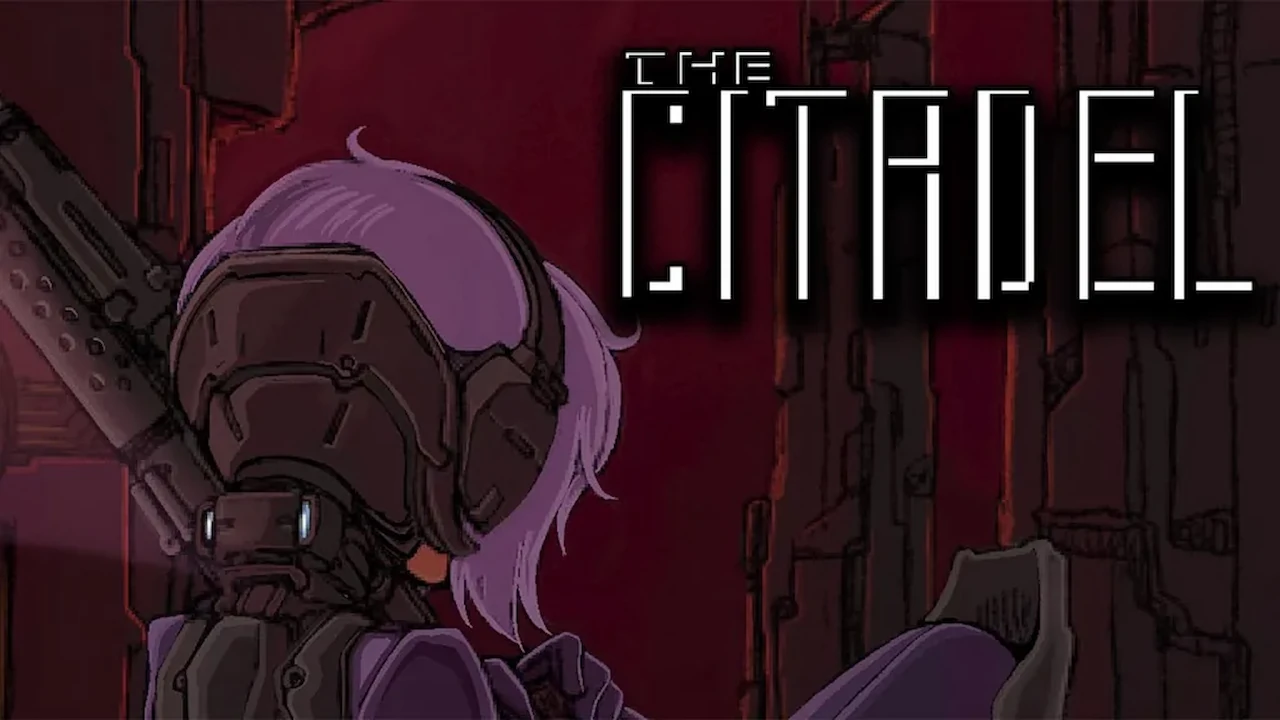
Leave a Reply